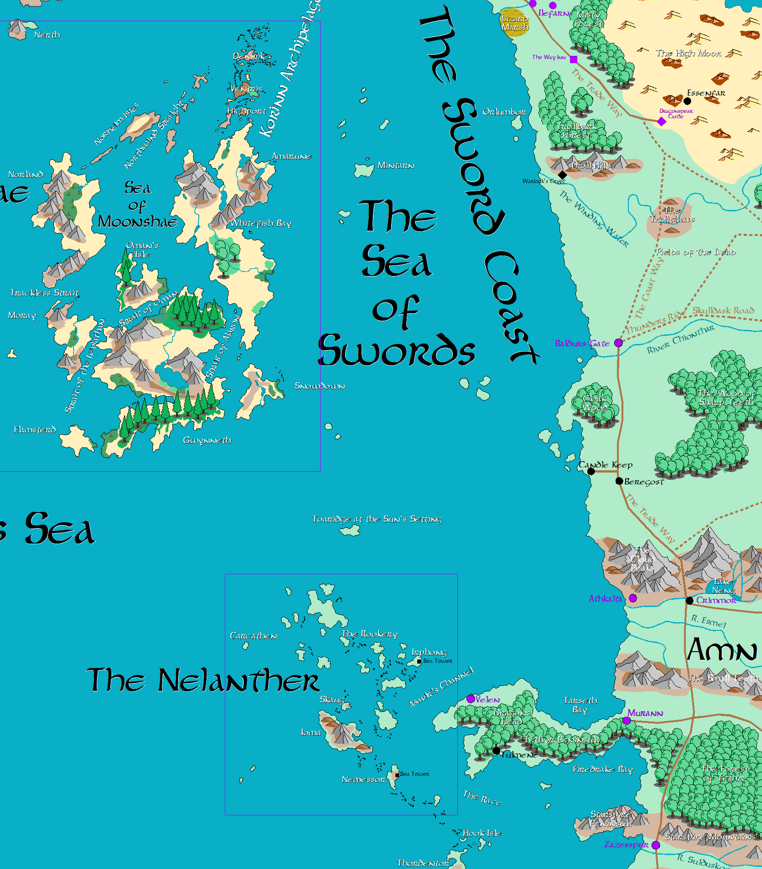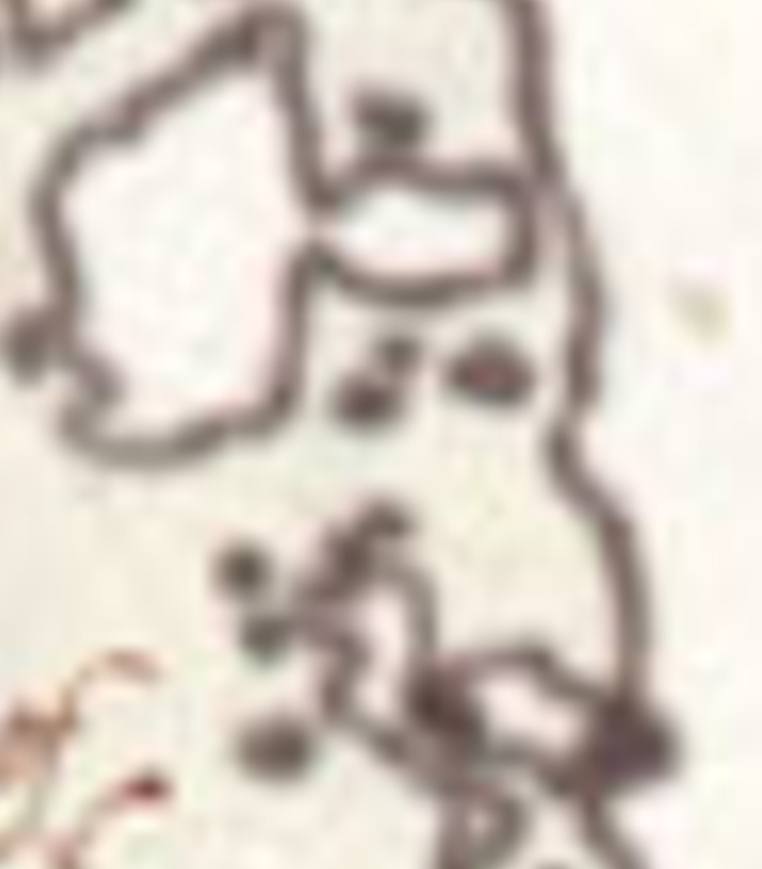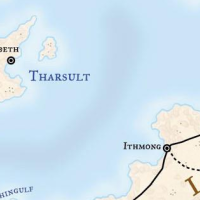To start, we can group the different area types shown on the map based on similarities of their drawing styles. The legend of the map is a helpful indicator which styles need to be covered (though it does not include every style present on the map).
 Oceans
Oceans
Oceans form the bottom layer of the map and are fortunately not a very coomplicated style. They start at a solid blue coastline, being light blue very close to the coast, slightly darker blue on a continental shelf and dark blue in the deep sea.
Coastal water regions can be generated based on the outline path of the continent, but the continental shelf will require a separate path due to it’s varying distance from the coastline. Fortunately, the gradient from coastal to shelf waters is wide, so it can be approximated with a coarser path and then smoothed over.
 Plains and Grasslands
Plains and Grasslands
Plains (or “Cleared Land” in the legend) are the beige-colored default style for land masses on the map. Visually, it is a mix of random dark-beige blots on a beige background and some random tiny dots. Both of these effects can be generated by applying turbulence/fractal noise filters of svg objects. While the random dots could also be created as svg objects, using a variation of the “starry sky” effect is more space efficient.
Grasslands are a slight color variation of plains with a wide and smooth color transition. The effect can be generated by adding a color overlay with blurred edges.
 Swamps, Marshes and Moors
Swamps, Marshes and Moors
Swamps and marshes feature a single colored backgroud, while moors have a random 2-color pattern similar to the ones found in the plains style. What unites these styles are the double outlines with random breaks. While this could be solved with two offset outline paths with dashed-lines, ideally we would want a filter to generate the effect on purely the original area path. Similarily, we have to find a way to randomly generate the grass bushles in the swamp and marsh styles.









 Oceans
Oceans Plains and Grasslands
Plains and Grasslands Swamps, Marshes and Moors
Swamps, Marshes and Moors